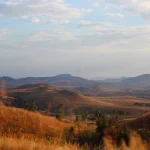
Exploring the Icy Wonders of Antarctica: A Journey to the End of the Earth

Introduction: A Journey to the End of the Earth
Antarctica, the southernmost continent on Earth, is a place of wonder and mystery. It is a land of extremes, with its vast icy landscapes, towering mountains, and unique wildlife. In this blog post, we will take a journey to the end of the Earth and explore the fascinating wonders of Antarctica.
Antarctica is a destination like no other. It is a place that captures the imagination and leaves visitors in awe of its beauty and grandeur. From its pristine landscapes to its diverse wildlife, Antarctica offers a truly unique experience for those who venture to its icy shores.
The Fascinating Geography of Antarctica
Located at the southernmost tip of the world, Antarctica is the fifth largest continent, covering an area of about 14 million square kilometers. It is surrounded by the Southern Ocean and is home to the South Pole, which marks the southernmost point on Earth.
Antarctica’s geography is characterized by its icy landscapes and unique geological features. The continent is covered in ice, with ice sheets that can be several kilometers thick. It is also home to some of the world’s largest glaciers, including the Lambert Glacier, which is the largest glacier in the world.
The Wildlife of the Icy Wonders of Antarctica
Despite its harsh environment, Antarctica is teeming with wildlife. Penguins are perhaps the most iconic inhabitants of Antarctica, with several species calling this frozen continent home. From the Emperor penguins, known for their regal appearance and unique breeding habits, to the Adélie penguins, which are known for their playful nature, these birds have adapted to survive in one of the harshest environments on Earth.
Seals are another common sight in Antarctica. Weddell seals, leopard seals, and crabeater seals can be found along the coastlines and ice shelves of Antarctica. These marine mammals have adapted to the cold waters and rely on the sea ice for breeding and hunting.
Whales are also a common sight in Antarctica. Species such as the humpback whale, minke whale, and orca can be seen swimming in the Southern Ocean. These majestic creatures migrate to Antarctica to feed on the abundant krill and fish that thrive in these icy waters.
The History of Antarctic Exploration
Antarctica has a rich history of exploration, with many brave individuals venturing into the unknown to discover and map this frozen continent. The first recorded sighting of Antarctica is credited to the Russian explorer Fabian Gottlieb von Bellingshausen in 1820. However, it was not until the early 20th century that expeditions were launched to explore and map the continent.
One of the most famous explorers of Antarctica is Sir Ernest Shackleton. In 1914, Shackleton set out on an expedition to cross Antarctica on foot. However, his ship, the Endurance, became trapped in ice and was eventually crushed. Despite this setback, Shackleton and his crew managed to survive and make an epic journey across the ice to reach safety.
The Challenges of Surviving in Antarctica
Living and working in Antarctica is not for the faint of heart. The continent is known for its extreme weather conditions, with temperatures dropping as low as -80 degrees Celsius (-112 degrees Fahrenheit) during the winter months. The isolation is also a challenge, as there are no permanent residents on the continent.
Supplying the research stations in Antarctica is a logistical challenge. The continent is only accessible by ship or plane, and transportation of supplies and equipment can be difficult due to the harsh weather conditions. Despite these challenges, research stations are equipped with all the necessary facilities to support scientific research and provide a comfortable living environment for their inhabitants.
The Importance of Scientific Research in Antarctica
Antarctica is a valuable location for scientific research due to its unique environment and isolation. The continent offers scientists the opportunity to study a wide range of topics, from climate change to astronomy.
Climate studies are particularly important in Antarctica. The continent is considered a key indicator of global climate change, as it is one of the fastest-warming regions on Earth. Scientists study the ice cores and sediment samples to understand past climate patterns and predict future changes.
Astronomy is another area of research in Antarctica. The continent’s clear skies and lack of light pollution make it an ideal location for observing the stars and studying the universe. Several telescopes and observatories have been set up in Antarctica to conduct astronomical research.
The Impact of Climate Change on Antarctica
Climate change is having a significant impact on Antarctica. The continent is experiencing melting ice, rising sea levels, and changes in wildlife populations. The melting ice is contributing to rising sea levels, which poses a threat to coastal communities around the world.
Understanding these changes is crucial for developing strategies to mitigate the impacts of climate change. Scientists are studying the effects of climate change on Antarctica’s ecosystems and wildlife to better understand how these changes will affect the planet as a whole.
The Unique Culture of Antarctic Station Life
Living in Antarctica is a unique experience that fosters a close-knit community among those who call the continent home. Research stations are like small towns, with scientists and support staff working together to conduct research and maintain the facilities.
Life in Antarctica is characterized by a sense of camaraderie and teamwork. Residents rely on each other for support and often form lifelong friendships. Despite the isolation and extreme conditions, many people find the experience of living in Antarctica to be rewarding and fulfilling.
The Thrills of Adventure Tourism in Antarctica
In recent years, adventure tourism has become increasingly popular in Antarctica. Tourists can now visit the continent and experience its wonders firsthand. Activities such as kayaking, mountaineering, and wildlife watching are available to those who are willing to brave the cold and venture into this icy wilderness.
Adventure tourism in Antarctica offers a unique opportunity to explore one of the most remote and pristine places on Earth. It allows visitors to witness the beauty of Antarctica’s landscapes and wildlife while also raising awareness about the importance of preserving this fragile ecosystem.
The Future of Antarctica: Preserving a Pristine Wilderness
Preserving Antarctica’s unique environment and wildlife is of utmost importance. The continent is one of the last remaining pristine wilderness areas on Earth, and it is crucial that we protect it for future generations.
Efforts are being made to minimize human impact on Antarctica. Strict regulations are in place to ensure that visitors and researchers adhere to guidelines that protect the environment. Additionally, international agreements such as the Antarctic Treaty System aim to preserve the continent for peaceful purposes and scientific research.
Conclusion: Reflecting on the Wonders of Antarctica
Antarctica is a place of wonder and awe. Its icy landscapes, diverse wildlife, and rich history make it a truly unique destination. From the early explorers who braved its harsh conditions to the scientists who continue to study its mysteries, Antarctica continues to captivate and inspire all who venture there.
As we reflect on the wonders of Antarctica, let us remember the importance of preserving this pristine wilderness for future generations. By understanding and protecting this fragile ecosystem, we can ensure that Antarctica remains a symbol of beauty and resilience for years to come.
If you’re looking for an adventure that’s truly out of this world, then Antarctica should be at the top of your travel bucket list. This icy continent is like no other place on Earth, with its stunning landscapes, unique wildlife, and extreme weather conditions. In fact, Antarctica is so fascinating that it has been the subject of numerous scientific studies and exploration missions. If you want to learn more about this captivating destination, check out this article on Destination Mate: A Journey Through the Swiss Alps. It may seem like an unrelated topic, but both Antarctica and the Swiss Alps offer breathtaking natural beauty and a sense of awe-inspiring wonder. So, if you’re ready to embark on a journey to the ends of the Earth or explore the majestic peaks of Switzerland, this article is a must-read!
Recent Posts


Discovering the Wonders of Madagascar: A Journey Through the Island’s Unique Flora and Fauna
